The Woodwind Family Instruments
Revised 30Sep’2023 by Instruments for Music
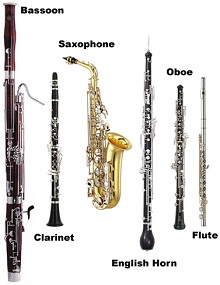
The woodwind family is a group of musical instruments that produce sound by blowing air through a tube or a reed. The woodwind family includes flutes, clarinets, oboes, bassoons, saxophones, and some other less common instruments. The woodwind family is one of the oldest and most diverse families of instruments, with origins dating back to ancient civilizations.
The woodwind family can be divided into two subgroups: the flutes and the reeds. The flutes are instruments that have no reed, and the sound is produced by blowing air across an opening or a hole. The flutes include the piccolo, the recorder, the transverse flute, and the pan flute. The reeds are instruments that have a thin piece of wood or plastic that vibrates when air is blown through it. The reeds include the single-reeds, such as the clarinet and the saxophone, and the double-reeds, such as the oboe and the bassoon.
The woodwind family is known for its expressive and versatile sound, which can range from soft and delicate to loud and powerful. The woodwind family can play a variety of musical genres, such as classical, jazz, pop, rock, and folk. The woodwind family is also an important part of the orchestra, where it often plays melodies, harmonies, and solos.
The Flute
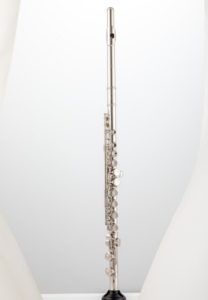
The Flute is a musical instrument that belongs to the woodwind family. It produces sound by blowing air across a hole in the mouthpiece, creating a vibrating column of air inside the tube. The flute has a long history, dating back to ancient civilizations such as Egypt, China, and India.
Flutes can be made of different materials, such as metal, wood, bamboo, or bone. Flutes can also have different shapes and sizes, such as the piccolo, the alto flute, and the bass flute. Flutes are often used in classical music, jazz, folk music, and pop music. Flutes can produce a range of tones and expressions, from soft and sweet to loud and piercing.
Flutes are played sideways to the mouth by holding them horizontally. Sound is created by blowing across a mouthpiece at the capped end of the instrument. Its pitch is changed by pressing the metal keys that cover holes along the tube. Flutes can be played solo or in ensembles, such as orchestras, bands, or chamber groups. Flutes are popular instruments because they are easy to carry, versatile, and beautiful.
The Clarinet
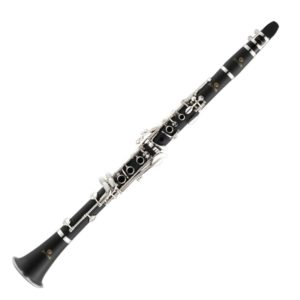
The Clarinet is a musical instrument that belongs to the woodwind family. It has a cylindrical bore and a single-reed mouthpiece. The clarinet produces a rich and mellow sound that can range from low to high pitches. The clarinet is used in various genres of music, such as classical, jazz, folk, and pop.
The clarinet was invented in the late 17th century by Johann Christoph Denner, a German instrument maker. He modified an earlier instrument called the chalumeau, which had a limited range and a weak sound. Denner added a register key to the chalumeau, which allowed it to play higher notes. He also improved the shape and size of the bore and the tone holes. The clarinet became popular in the 18th century, especially in France, where composers such as Mozart, Weber, and Brahms wrote many pieces for it.
The clarinet has evolved over time, with different types and sizes being developed for different purposes. The most common type of clarinet today is the B-flat clarinet, which has a standard range of about three and a half octaves. Other types include the A, E-flat, bass, contrabass, and soprano clarinets.
The clarinet is played by blowing air into the mouthpiece and pressing the fingers on the keys to change the pitch. The player can also use various techniques to create different effects, such as vibrato, glissando, staccato, and legato. The clarinet is a versatile and expressive instrument that can convey a variety of emotions and moods.
The Saxophone
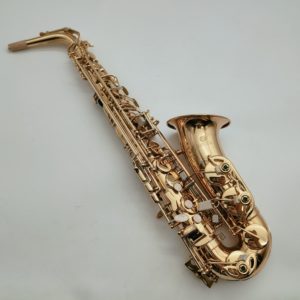
The Saxophone is a musical instrument that belongs to the woodwind family. It was invented by Adolphe Sax in the 19th century and has since become a popular instrument in various genres of music, such as jazz, classical, rock, and pop.
The saxophone has a distinctive sound that can range from smooth and mellow to bright and piercing, depending on the type of saxophone, the mouthpiece, the reed, and the player’s technique. The saxophone is played by blowing air into a mouthpiece that has a single reed attached to it. The reed vibrates and produces sound waves that travel through the metal body of the instrument. The pitch of the sound is controlled by opening and closing holes on the body with the fingers.
The saxophone has several parts, such as the neck, the body, the bell, the keys, the rods, and the pads. The saxophone comes in different sizes and shapes, such as the soprano, alto, tenor, baritone, and bass. Each saxophone has its own range of notes and timbre. The saxophone is a versatile instrument that can express a variety of emotions and moods through music.
The Oboe
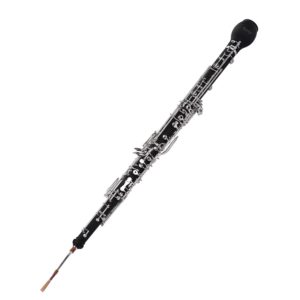
The Oboe is a woodwind instrument that produces a distinctive and expressive sound. The oboe has a double reed, which means that two pieces of cane are tied together and vibrate when the player blows into them. The oboe has a conical bore, which gives it a bright and penetrating tone.
The oboe is often used as a solo instrument in classical music, as well as in chamber ensembles and orchestras. Some of the most famous oboe composers include Vivaldi, Bach, Handel, Mozart, and Beethoven. The oboe is also used in some genres of folk, jazz, pop, and rock music.
The oboe is a challenging but rewarding instrument to play, as it requires a lot of breath control, embouchure, and finger coordination. The oboe can produce a wide range of dynamics, articulations, and effects, such as vibrato, glissando, and multiphonics. The oboe is a versatile and expressive instrument that can convey many emotions and moods through its music.
The English Horn
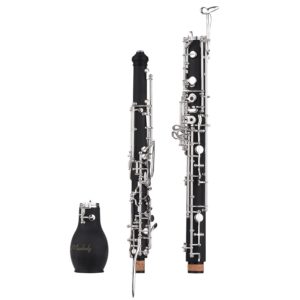
The English Horn is a double-reed woodwind instrument that belongs to the oboe family. It is also known as the cor anglais, which means “English horn” in French, but it is neither English nor a horn. The origin of its name is unclear, but some theories suggest that it comes from the French word “cor anglé”, meaning “angled horn”, or from the German word “Engellisches Horn”, meaning “angelic horn”.
The English horn has a lower and mellower sound than the oboe, and it is often used to create a melancholic or pastoral mood in music. Some famous composers who wrote for the English horn include Mozart, Beethoven, Brahms, Dvořák, Ravel, and Stravinsky.
The Bassoon
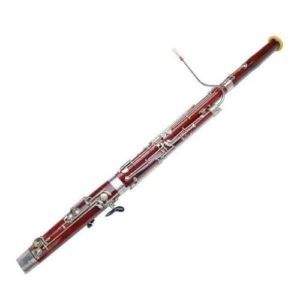
The Bassoon is a woodwind instrument that has a distinctive low-pitched sound. It is often used in orchestras, chamber music, and concert bands to provide a rich and warm bass line. The bassoon is also capable of playing expressive melodies and intricate passages, as well as producing humorous and quirky effects.
The bassoon is made of several sections of wood that are connected by metal tubes and joints. The player blows air into a double reed, which vibrates and creates the sound. The player uses both hands to press keys and manipulate levers that open and close holes on the instrument, changing the pitch and tone. The bassoon has a wide range of over four octaves, from B♭1 to C5, and can play in both the bass and tenor clefs.
The bassoon is one of the oldest woodwind instruments, dating back to the 16th century. It evolved from earlier instruments such as the dulcian and the shawm, which were used in Renaissance and Baroque music. The modern bassoon was developed in the 18th century by German instrument makers, who improved its design and acoustics. Some of the most famous composers who wrote for the bassoon include Vivaldi, Mozart, Beethoven, Stravinsky, and Prokofiev.
